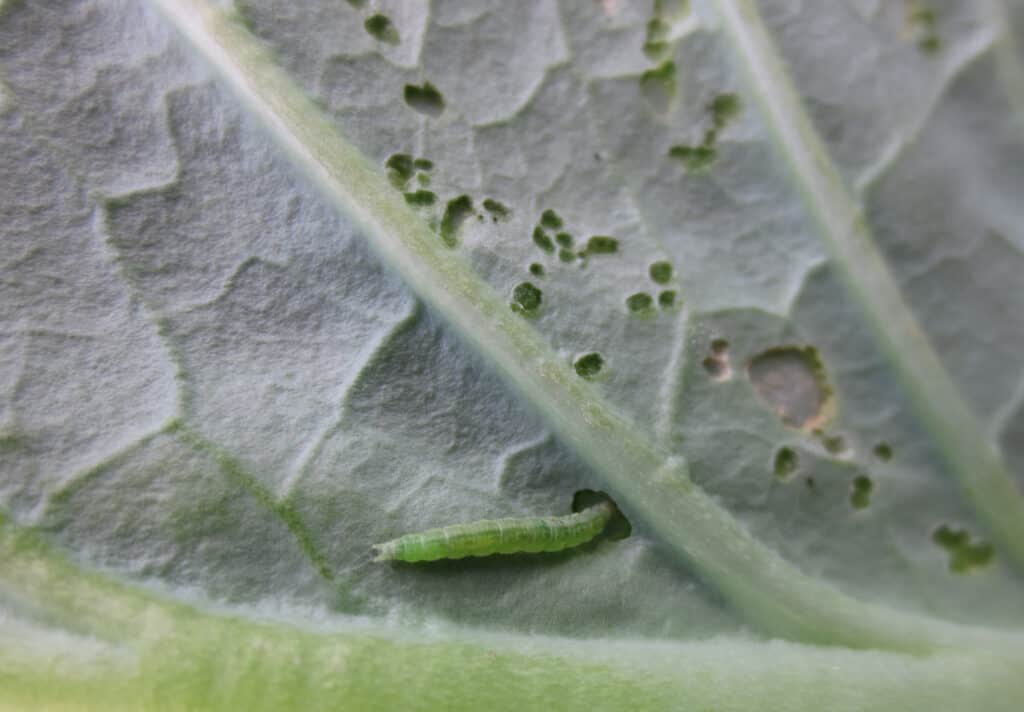Diamondback Moth
Plutella xylostella
Adult males make high amplitude boing noise to attract females
Advertisement
Diamondback Moth Scientific Classification
- Kingdom
- Animalia
- Phylum
- Arthropoda
- Class
- Insecta
- Order
- Lepidoptera
- Family
- Plutellidae
- Genus
- Plutetalla
- Scientific Name
- Plutella xylostella
Read our Complete Guide to Classification of Animals.
Diamondback Moth Conservation Status
Diamondback Moth Facts
- Name Of Young
- Caterpillar
- Group Behavior
- Infestation
- Fun Fact
- Adult males make high amplitude boing noise to attract females
- Estimated Population Size
- 100-150 per square metre on plants
- Biggest Threat
- humans
- Most Distinctive Feature
- Diamond patterns on the wing
- Distinctive Feature
- slightly curved wings
- Other Name(s)
- Cabbage moth
- Gestation Period
- 25-30 days
- Wingspan
- 12-15mm
- Litter Size
- 160
- Predators
- Damsel bugs, Ground beetles
- Diet
- Herbivore
- Lifestyle
- Nocturnal
- Favorite Food
- Cruciferae
- Common Name
- Diamondback Moth
Diamondback Moth Physical Characteristics
- Color
- Brown
- Grey
- Lifespan
- 12 to 16 days
- Weight
- N/a
- Height
- N/a
- Length
- 6mm
- Age of Sexual Maturity
- 25-30 days
- Age of Weaning
- N/a
- Venomous
- No
- Aggression
- Low
View all of the Diamondback Moth images!
The larvae of diamondback moths are voracious pests and are growing resistant to insecticides.
Summary
The diamondback moth is a small moth that is most popular as a pest of cruciferous vegetables. These insects commonly attack vegetables like cabbage, Brussels sprouts, broccoli, rutabaga, and cauliflower. Although they are small, they are usually quite numerous, causing significant damage to the leaves of the plants they attack. The larval (caterpillar) of the diamondback moth is what causes the most damage to plants. Experts consider this insect as one of the most widely distributed of all the Lepidoptera.
Diamondback Moth Facts
- DBM live for 25-30 days
- Older larvae feed on leaf undersides creating a windowpane effect
- Adult females lay their eggs at night only
Diamondback Moth Species, Types, And Scientific Name
Also known as the cabbage moth (because it mainly attacks cabbage and similar cruciferous vegetables), the moth goes by the scientific name Plutella xylostella. It belongs to the family Plutellidae, a family of tiny to medium-sized moths. There are more than 200 species of moths in the Plutellidae family.
The small grayish-brown appearance of the cabbage moth is quite characteristic of moths in the Plutellidae family. Experts believe that the species might have originated from Europe, the Mediterranean region of South Africa, but is not spread all over the globe due to their ability to migrate over long distances. Diamondback moths are also considered notorious pests. The fact that they have developed resistance to many of the most common chemicals favors their proliferation.
Appearance: How To Identify Diamondback Moth
Cabbage moths are small insects with gray and brown color. One of their most distinctive features is the cream-colored band on their back which has the shape of a diamond when folded. This is the origin of the insect’s common name.
When you view it from the side, the tip of the moth’s wings has a slight upward turn. The male and females of this species are similar in size and appearance. Adult diamondback moths have a wingspan of about 15mm, and their body is about 6mm long. They feature prominent antennae and narrow forewings, lighter along the anterior margins with dark speckles all over.
Adult cabbage moths live for about 12 and 16 days. Female moths live longer (about 16 days) and spend ten days out of these laying eggs. Although diamondback moths are weak fliers, they’re light enough for the wings to distribute them over long distances.
Habitat: Where to find Diamondback Moth
Although experts believe that diamondback moths originate from European, they’re now present worldwide. The insect can be found pretty much anywhere where cabbage is grown. It has even been found in cold regions where it cannot overwinter successfully, such as British Columbia and several regions of Canada.
DBM survives on Brassicaceae host plants. The insect will spend most of its life near the selected host plant. Experts believe the female moth can recognize chemicals such as glucosinolates and isothiocyanates in the host plants.
Diet: What Do Diamondback Moths Eat?

Diamondback moth larva feed on cruciferous plants, such as the one pictured here, which is feeding on a cabbage leaf.
©Lam Van Linh/Shutterstock.com
Diamondback moths live and feed on cruciferous plants such as cabbage, broccoli, cauliflower, kale, rutabaga, and brussels sprouts.
Due to the insect’s larvae’s feeding activities, farmers worldwide consider these moths as pests. A species of cabbage moth ( Plutella antiphonal) is endemic in New Zealand.
What Eats Diamondback Moths?
Ground beetles and damsel bugs typically eat the larvae of diamondback moth. Green lacewings also prey on the moth’s eggs and larval offspring.
What Does Diamondback Moths Eat?
The larvae of the Diamondback moths feed on the leaves of cruciferous crops, and they can cause significant damage due to their large numbers. Specifically, the moth targets the area between the midribs and the large veins. The larvae prefer to eat the lower surface of the leaves, and they’ll typically leave the thin upper epidermis intact. This creates a sort of window-pane effect.
These moths are voracious feeders and may cause stunted growth in the plants they attack. In many cases, these insects cause the heads of young cabbage plants to abort. They attack root crops as well. But the damage they cause is not really significant.
Prevention: How To Get Rid Of Diamondback Moth
Diamondback moths can cause significant damage to cruciferous crops. To prevent moth infestation, farmers may apply insecticide to the leaves twice per week. In recent times, experts have discovered that moths are gradually growing resistant to insecticides. Combining or rotating insecticides is often recommended.
Diamondback moths are susceptible to rainfall. Experts have found out it’s a major cause of mortality in the young larvae of the insect. Farms that have sprinkler irrigation systems are less likely to suffer an infestation. Diversifying crops or interplanting crucifer plants with other crops are also effective ways of for reducing moth-related plant damage.
View all 110 animals that start with DDiamondback Moth FAQs (Frequently Asked Questions)
Are Diamondback moths dangerous?
Diamondback moths are mostly harmless insects. They do not sting or bite humans. However, they’re considered economic pests because of the damage they cause to cole plants by the insect larvae. They’re difficult to control due to their resistance to chemical insecticides.
How many legs does a Diamondback Moth have?
Like all Moths, adult Diamondback moths have three pairs of legs which makes a total of six legs.
How do you identify Diamondback moths?
Adult diamondback moths have a small, slender body with grayish-brown wings and prominent antennae. They also have a light brown colored band along their back, forming light-colored diamonds on the insect’s back when the wings are closed. The tips of the Diamondback moth’s wings also has a slight upward curve when viewed from the side. This prominent feature is the basis of the insect’s common name.
How do you get rid of Diamondback Moths?
Insecticides are widely used to control moth populations. However, the insects have grown resistant to common insecticides over the years. Frequent application and insecticide combination might be more effective. Cultural control practices such as mixed cropping and introducing natural predators might also be effective.
Thank you for reading! Have some feedback for us? Contact the AZ Animals editorial team.


















